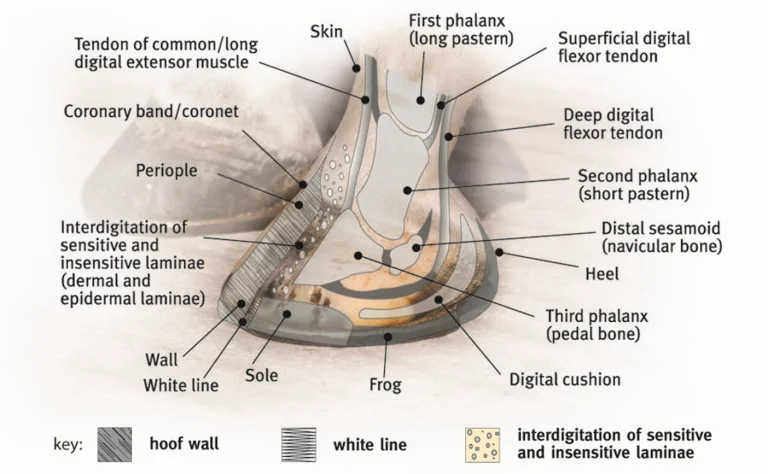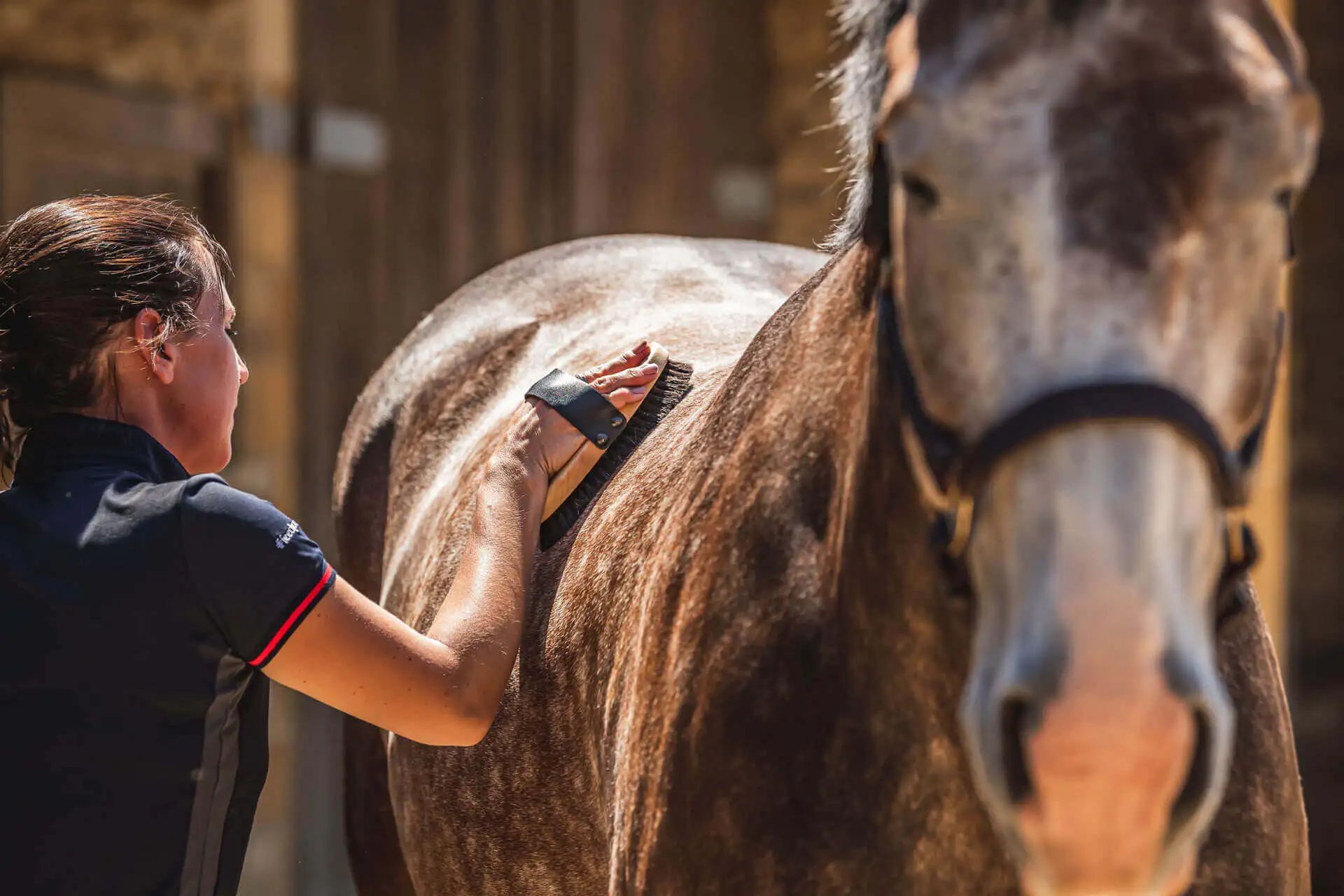The hoof is an extremely complex structure and the single biggest factor affecting the horse’s soundness.
The central role of a hoof is to act as a shock absorber and protector of the internal structures. The hoof withstands huge forces from the weight of the horse – whilst standing still and in motion – hence the adage ‘no hoof, no horse’.

Back to basics
The hoof surrounds and protects the lower part of the short pastern, the pedal and navicular bones, as well as the lower part of the deep digital flexor tendon.
The hoof wall grows downwards from a band of tissue called the coronary band or coronet. The horn grows at the rate of a centimetre a month, taking approximately one year to grow from coronet to the ground. The outer covering of the hoof wall is termed the periople and acts as a moisture regulator, however, the shoeing process often removes this important tissue.
The internal surface of the hoof wall consists of a layer of nonsensitive and sensitive laminae, attached to the pedal bone. The underside of the hoof is a slightly concave shape for strength and grip.
Much of the concussion of movement is absorbed by the hoof and beneath the pedal bone is the digital cushion, which absorbs and dissipates the weight from the short pastern. This mechanism widens the lateral cartilage, which spreads the heel, thus absorbing the concussive forces over a greater surface area.

